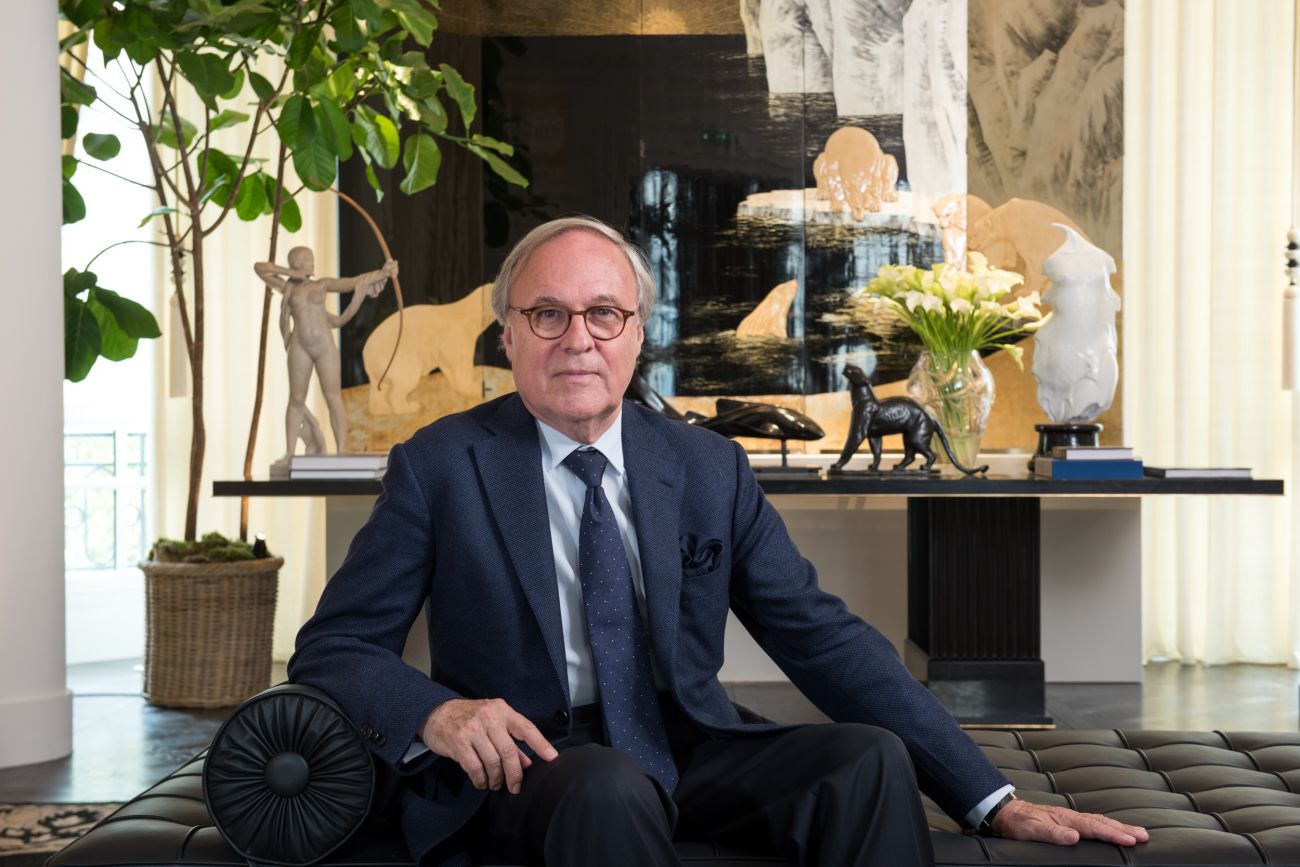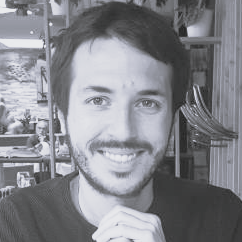 |
INTERVIEW - PIERRE-YVES ROCHON, FOUNDER, AGENCE PIERRE-YVES ROCHON: "AS AN INTERIOR DESIGNER, YOU HAVE TO LIVE VOLUME AND EXPRESS IT" (France)
The world-renowned Breton interior designer has made volume and light the pillars of his quest for beauty, comfort and simplicity in the luxury hotel landscape.
|
Category: Europe - France - Interviews and portraits
- Interviews - Industry leaders
Interview made by Christopher Buet on Monday 27 November 2023
 Pierre-Yves Rochon is sought after by some of the world's finest hotels, and stands out for his attention to others, and the care he brings to light and volume in his projects.
Photo credit © Gdelaubier-Paris-9-2
Over the course of his rich career, the native of Le Pouliguen, a region for which he has retained a special affection, has played with details to dress the world's most beautiful hotels, rethinking their interiors and becoming a stage director, playing with volumes and light to open up spaces and provide an airy, convivial scene offering the best comfort to guests. The Four Seasons George-V and the Shangri-La in Paris, the Hotel Savoy and the Dorchester in London, the Four Seasons Firenze in Florence and the Peninsula in Shanghai all bear the PYR hallmark. A subtle balance between intimacy and open court, between classicism and modernity, but always out of time, this film buff slips behind his projects, writing a script for each one that respects its history and is driven by the will to dare.
In the offices of his agency, overlooking the Parisian rooftops and offering an outstanding view of the city's monuments, Pierre-Yves Rochon set aside an hour of his time to receive the Journal des Palaces. Behind his large and elegant desk, in his dark suit, he shared with us his passion for volumes and light, which guide him in the creation of his architectural scenographies, his love of simplicity, so difficult to achieve, and his taste for audacity, without which luxury would not exist.
Journal des Palaces: You hesitated between cinema and music before choosing the Beaux-Arts. Why did you make this choice?
Pierre-Yves Rochon: I didn't want to be an actor, I wanted to be a director. Unfortunately, I didn't have what it takes. At the time, to get into the IDHEC (Institut des Hautes Etudes Cinématographiques), you had to pass what was called the Bac Mathématiques élémentaires, and I was very bad at math. Music was a passion of mine, but in my family it wasn't very popular, and as I also liked art and drawing, I went to the Beaux-Arts, which was already a problem, because you had to be an engineer, a soldier or a doctor, but not an artist.
To what extent has your passion for cinema nourished your approach to architecture and decoration?
In my profession, I'm constantly involved in staging. When you work on a hotel, you're given a program, a narrative for the hotel. That could be the scenario.
Once you've got the script, as a director you start planning shots, wondering how you're going to make people live. In this case, the scenarios will be different depending on whether you have a palace by the sea or a business hotel in town. Actors are also differents, as are lighting, music and decor. In the end, it's all about cinema.
How do you dramatize the spaces in which you work?
Volumes have this theatrical aspect. If you have 2.5 m ceilings in a 100 m² room, it's not the same as if you have 12 m ceilings for the same surface area. As an interior designer, you have to live with volume and express it. I work a lot on axes and symmetry.
With volumes, I think as a customer. I ask myself how I'm going to live in the room, what I'm going to see : proportions, style. Then there's a wonderful thing that didn't exist like this when I started: light. Light is an extremely important part of a venue's theatrical success. I've also been known to choose a work of art that becomes the theatrical star of the venue.
Do you have an example?
A long time ago, for the (JW Marriott) Essex House in New York on Central Park, I commissioned a pair of 2.5 m high by 1.80 m wide paintings from an American painter. I asked him for a couple with the hotel behind and wrote Essex House. All the tourists who came to the hotel had their photo taken in front of this painting with "Madame and Monsieur" Essex House.
You mentioned light. How has its use changed since you started?
Behind my desk, I have lights that light up and down. Before, we couldn't do that because the lamps were very hot and could crack, and the color wasn't the same. Today, we have light architecture capabilities. The more things go, the more we can perform with light sources, their temperature, which gives different colors, and all this makes it possible to play, to take off a volume, to show an architecture or the work of a sculpture. Light has become almost like a pencil.
A pencil that you can program.
We can decide light's life. In a bedroom, you won't have the same light when you come home at night as when you left for dinner at 8pm. After dinner, around midnight, you don't want to turn on the lights, but you do want to see the bed and get into it. The star is the pillows and the bed. It's all about scenography, and it's an extension of our work on volumes.
Aside from light, have you seen other elements evolve in interior design?
One of the biggest evolutions has been space. Before, when you had a suite in a hotel or apartment, residential and hospitality became more and more intertwined. You had a small entrance, a living room, then a door to go into a bedroom, and another in the bedroom to go into a bathroom. Today, between the living room and the bedroom, I can make a large opening with sliding doors. At a stroke, I can have a single living-room/bedroom volume and multiply the windows, or if I want privacy, close the sliding doors. Opening up space is an evolution that didn't exist before the 1980s.
The same goes for the bathroom and dressing room. Before, dressing rooms were closets, except in rare cases. In the hotel business, these closets were in the entrance hall. We've moved them closer to the bedroom and bathroom, opening up the space between them. This doubles the volume and living space.
Where does this desire to open up come from?
The evolution of the hotel industry follows that of society, people's way of life, creativity and technology. In Japan and China, they already had this notion of opening up. Today, hotels have become places for living and leisure, not just a place to sleep.
One of the most recent developments has been a greater focus on eco-responsibility and sustainability. How have you integrated these elements?
I think that the moment when you live in a hotel should be pleasant and not coded. In other words, if you're in Paris, you can be classic, because that's called heritage and respect for place, but you don't have to be all the same in beige on beige, while still being beige.
How does durability fit into all this? Imagine a Louis XVI pedestal table. We used to have marble on it. Now, we're not going to put marble on it, with all that that implies in terms of extraction and so on. There are tiles measuring 3.6 m by 1.8 m, just like marble slabs, and, except for purists, you can't see the difference between these two materials. You cut this tile, put it on your pedestal table in a metal gallery, and you get the same effect. There are lots of new materials to replace all these elements that are damaging the planet. Of course, they have to be manufactured, but we're getting closer to zero impact. It's the same in bathrooms, where there are no more joints. There are also materials that replace wood, which are more ecological and stand up better over time.
There's also a noticeable trend towards relocalization. Can you confirm this?
I once had a project in Cairo for a major company. We had to refurbish around 400 rooms in oak. They told me I had to be modern... I do contemporary interior design with oak veneer. I worked with a French furniture company to find a reconstituted veneer. Firstly, we didn't cut down a forest. Secondly, since we were doing contemporary, uncluttered and repetitive furniture, we were sure of getting the same thing. At the time, the company produced a 20-page report telling me that I was wrong and that we should get some trees. As we all know, there are oak forests in Egypt... It was nonsense. Fortunately, attitudes have changed.
Did you succeed in imposing the recomposé?
I didn't succeed. I had 25 different oak trees, with different colors, and obviously it was my fault if it wasn't right.
How do you reconcile the constraints of the site with your expectations?
You have to clearly identify the project. I don't work for myself, but for my customers. If someone tells you they want a blue hotel and you deliver a red one, that's a problem. My job is to listen. Conflicts can come from third parties.
What is your relationship with the material? Does the project dictate the material or vice versa?
It's always the project that decides the material. If my customer tells me he wants a 5-star palace by the sea, depending on whether we're in the Mediterranean or Brittany, in La Baule, the material won't be the same. In the Mediterranean, we'll be using terracotta, plaster and tiled floors. In Brittany, we don't have that. We'll be more into faded blues, sandy tones, beiges and soft colors.
Is the idea to be anchored in a territory?
Yes, and to take materials from there. We're not going to bring an onyx from the ends of the earth to Brittany just because we think it's pretty. That wouldn't make sense.
What role do plants play in your interiors?
I've a passion for gardens. When I'm working on a project, my colleagues tell me to stop minding my own business, because I design gardens whenever I can. In my office, for the last 35 years, I've had a white orchid (on a table opposite his desk, editor's note). It's a detail, but nature is extremely important.
My dream would be to come to a hotel in May and not have the same flowers as in June and November, but to always have them. What would that cost? Nothing, except to have thought of it and to want it. For me, it's a luxury to have a terrace in a suite and to have taken the time to think about how the plants live there. At the George V, I asked for jasmine on the walls in a suite. When you come in May and the whole suite is perfumed as soon as you open the window... To have that, in Paris, on avenue George V, is not bad!
What's your definition of luxury?
True luxury is space, volume. 50% of the success of a place is space. After that, it's simplicity.
You don't like uniformity. Why?
We're currently working for the Château des Crayères in Reims. When he created it, Xavier Gardinier took on two young people, Gérard Boyer, who went on to become a three-Michelin-star chef, and me. We were both 30 years old. It was a bourgeois house, owned by the Polignac family, and in it we created a restaurant and some fifteen rooms. At the time, my wife and I suggested that each room be decorated differently. For a designer, it's more important and enjoyable to do 15 different stories than 15 of the same one. Maybe uniformity is better financially, but I'm not interested.
Today, we're creating six new rooms, and we're not going to do the same thing as everyone else.
How do you create this difference between each room while maintaining the uniqueness of the place?
We're in France, in Reims, in a 17th-century château, and I'm going to look at the documents, the Braquenié and Prelle fabrics and so on. We realize that flowers and fruit existed on the fabrics. Why not make one room red, another mauve, another yellow? Why not mix 25 fabrics?
Is this also a way of creating luxury, with no limits?
Of course, that's what creating luxury is all about, but it requires a lot of effort and desire.
Did you have any role models or mentors?
Jansen, first of all, which was one of the greatest decorating houses between the 1930s and 1970s, with Stéphane Boudin. In England, I really liked David Hicks, a great decorator. There was also the Frenchman Jean Dives, wonderful decorator of Maison et Jardin, which was a great gallery, or (Victor) Grandpierre. I admired a lot of Americans too. In the very early days, InterContinental had an extraordinary American decorator Neal Prince (who died in 2017 aged 96). He was already quite old, but he taught me a lot. When he came to Cannes, it was in a mink coat and roller skates. What a talent.
How did they inspire you to build your own style?
I've always been curious, and in our business you have to be. You have to look at what others are doing, then you can make up your own mind.
Look at how David Hicks worked with colors, brought in a more modern period in architecture, choice of furniture and fabrics. When I used to go to the Bel Air Hotel in Los Angeles, where there were the greatest American decorators, I'd ask myself why so-and-so had done red with this, why he'd mixed it with Chinese, why an all-mirrored bathroom... All that enriched me. I look at everything. When I go to the movies, the theater or the opera, I ask myself how they did the lighting, the costumes... It gives you ideas that you use in your projects.
Which project has particularly impressed you and why?
At the moment, I'm working again on the Four Seasons in Florence. It's a 15th-century palace. I was chosen from among six or seven decorators by the Italian client living in Florence. The first thing he said to me was: "Monsieur Rochon, I don't want you to be American, English or French. I want you to be from Florence". So here I was, faced with a palace that had once belonged to the Medici family, plus apartments, a sublime listed park and a convent. As I was wondering how to go about this project, I said to my director at the time, "I think this is going to be my mistress."
When I started, I spent a week with my wife in Florence. It was February, very cold, and we were alone in the palace. I had two trestles, a table, a sublime fresco above the room I was in and a big bunch of keys. There, I drew the whole hotel, how I arrived, where the luggage went, where the reception was, where the concierge was, and so on.
We had every possible problem, two years of restoring paintings. Sometimes we'd break things like ceilings and discover wonderful new things like frescoes. Then I'd have to redo the decor to integrate these new elements. We made the fabrics at the agency. We'd take suitcases and, with my wife and collaborators, bring them to Florence. But before taking them out again, I asked the painter to make color palettes for each room. I noticed that there were 12, no more. And I chose my fabrics according to these palettes. When I got to Florence, I'd take them out and adjust them, because the light isn't the same there as in Paris. It took me seven years to make this hotel. It was extraordinary.
What are you doing there again today?
The base was done 13-15 years ago, and now I come in to do a bit of make-up, which I seem to enjoy. I'm lucky in that many of my customers continue to trust me.
What project would you particularly like to design?
I don't have any crazy dreams, but I do miss the Raffles in Singapore. I won the contract to renovate the hotel, but lost it because I didn't want to take on a job that wasn't mine and be responsible for the architecture and construction.
How do you see your profession evolving in the years to come?
What I hope for the hotel industry is that we stop multiplying the number of players of all kinds, that we stop the complexity and return to simplicity and quality.
We're a civilization with a heritage, and I'm afraid it's disappearing for lack of skill and interest. Appearance is so much more important than depth that I wonder when we'll stop looking at ourselves and start looking at others.
What does simplicity mean to you?
Simplicity is being attentive to others. It's very complicated to be simple in creation. It's easier to take a sheet of paper and make a doodle than to make just the right line in the right place. It's the hardest part, but it's what I prefer.
|
|







